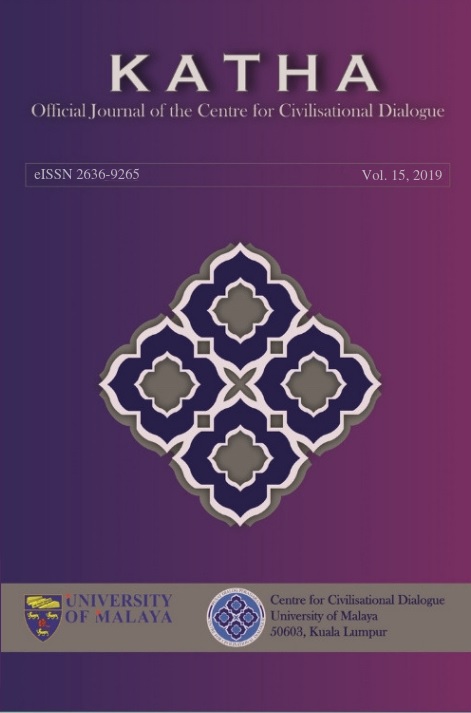Metaphysics of Nothingness: Heidegger, Ibn ‘Arabi and Nagarjuna
Heidegger, Ibn ‘Arabi & Nagarjuna
DOI:
https://doi.org/10.22452/KATHA.vol15no1.5Abstract
For this article, the author attempts to describe the metaphysics of nothingness from three sources; Martin Heidegger, Ibn ‘Arabi and Nagarjuna. Each of the philosophers engages the intimation of ‘the nothing’ to fathom the existential question of being, reality and logic. The idea for the article was influenced by Heidegger's seminal text “What is Metaphysic?” (1929/1998). Heidegger writes how human “a being held out into the nothing.” Why and how is human holding out into the nothingness? What are the boundaries that form this nothingness? Rather than risk into pessimistic existentialism, the author pursues the question of nihilism in the nothingness with the kind of joy, as Heidegger would say it: “Secret alliance with the cheerfulness and gentleness of creative longing.” With three different thinkers from different eras – Heidegger was a German philosopher but brought up with Christian teachings, Ibn ‘Arabi was an Andalusian Islamic Sufi whereas Nagarjuna was an Indian-Buddhist teacher – it is hoped that the idea about nothingness can be grappled and if not, be meditated upon.
Keywords: Martin Heidegger, Ibn ‘Arabi, Nagarjuna, nothingness, metaphysics
Downloads
Downloads
Published
How to Cite
Issue
Section
License
Articles submitted to the journal should not have been published before in their current or substantially similar form, or be under consideration for publication elsewhere. Authors submitting articles for publication warrant that the work is not an infringement of any existing copyright and will indemnify the publisher against any breach of such warranty. For ease of dissemination and to ensure proper policing of use, papers and contributions become the legal copyright of the publisher unless otherwise agreed. By submitting a manuscript, the author(s) agree that copyright for the article is transferred to the publisher, if and when the manuscript is accepted for publication. However, it can be reprinted with a proper acknowledgment that it was published in KATHA.

This work is licensed under a Creative Commons Attribution-NonCommercial-NoDerivatives 4.0 International License.




